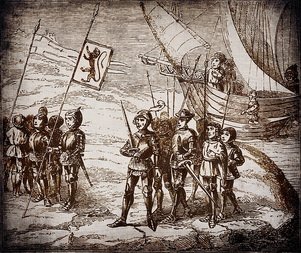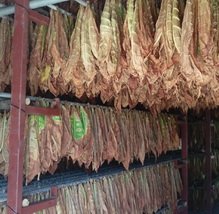Brief history
from the ashes of a volcano to a thriving community of islands
„The devil is an angel too” by Miguel de Unamuno
H
ow else would you explain that such a beauty was created in a process of destruction and fire.
The Canarian Islands archipelago is a group of a few islands that were created by the volcano. They are mountainous, with beautiful valleys and beaches created by the ocean. They are not far, they sit on the Atlantic Ocean, just next to Morocco. The archaeological findings can now prove that the first people lived here around the V century AC. There is a theory saying that these were the Berbers from Northern Africa. They were called the Guanches.
What was before? A legend puts Atlantis in this very spot. Platon, the Greek philosopher (V-IV BC), wrote that the city was destroyed by a volcano and all that was left was a volcanic peak. You can think about it when you are on Teide. Is it the caldera that they wrote about?
Romans also knew the Islands. They called them “The islands of the happy”. But the name that we know today derives from canis. Plinius (I AC), in his Historia Naturalis writes about big groups of wild dogs there.
The signs of the old cultures are scarce, and you can mostly find them in the local museums. The biggest influence came with the Spaniards. They found simple people living here, almost primitive and living in isolation. The Islands were remote, knew nothing of changes happening in Europe. The natives didn’t even know iron or a wheel. They mummified their dead, painted stories on the rocks, and lived in small villages cultivating basic grains and catching fish.
It was too easy it may seem. In 1402 Jean de Bethencourt, under the command and protection of king Henry III of Castille landed on one of the islands. They came carrying a Christian flag but the only thing they wanted was land and riches.
The Guanches didn’t surrender without a fight! Regardless of the mismatch in technology level, the conquest took a while. The land was partially bought, married into, or received as an inheritance or a donation. There was even an episodic problem of the Portuguese, being also interested in the islands, but it was quickly resolved (it was the times of conquista señorial – the conquest of the nobles, more interested in their own politics than that of their country). It is worth mentioning that we are talking only about the small, eastern islands. Gran Canaria, Tenerife, and La Palma were still in the hands of the Guanches.
Maybe because of it, we do now divide the Islands into the West and East ones. The progress of the conquest is one factor. The other one is the influence of the local population that still lived there, and the way they integrated into the newforming society.
The conquest turned into the “royal” one when Isabela and Ferdinand united two crowns into one (1477 – they bought the right to the Islands). Their goal was to unite Spain, but the Canary Islands were a part of it. The last island that had to surrender was Tenerife and it happened in 1496. A place called Acentejo became a dual symbol. First, it was the Guanches that killed the Spanish forces there. The victory was short-lived though… the Spaniards returned a few years later and won at the same place, marking the end of the independence of this island.
The lands were divided between the victors. The Guanches almost disappeared in the aftermath of the wars. Those who were left had to assimilate or die as well.
These troubling years had a brief but notable moment. In 1492 three ships came to Gran Canaria. It was Christopher Columbus with his crew. They anchored the ship to prepare for the upcoming journey over the Atlantic. They had to find another route to India, and they had the royal blessing. But after a few weeks of resting and provisioning, they left Las Palmas and, in the process, discovered the New World. The Middle Ages were slowly ending and so did the pre-Spaniard history of the Canary Islands.
The adjacent map shows you the Spanish possessions around those times. You can see the islands in the bottom left corner.
Since the traffic to and from the New World profited from the existence of a stop like that, products started to flow in and out. Some exotic fruits and spices found the volcanic grounds perfect, and the Islands enriched with the plantations of tobacco (on the photo – drying of the tobacco leaves) and cocoa. One of the indigenous species from the Canary Islands, that found its way to Europe, was a small, yellow bird. His song cheered the hearts of the courts, ladies, and commoners. His name comes from the place of his birth because this is, of course, a canary.
The crisis came in the XVII and XVIII centuries. The economy went into a downfall and there was a big wave of emigration. Since many Canarians came back to Europe, we can safely assume that there may be a drop of Canarian blood in us and this is what is calling to “return”. The beauty of the Hesperides Islands is like a magnet and today many people travel there in the search of a place to live. After the rule of General Franco, tourism bloomed in all the Spanish lands. It is a big part of the local economy of the Islands.
But before this happened there was a conflict of influence and interests. The Canary Islands were one Spanish province with the capital of Santa Cruz de Tenerife (the photo shows a government building at the Spanish Square and the Monument of the Fallen in the Spanish Civil War). This was not taken well by the government of Gran Canaria. Their quarreling lasted over 100 years and finished in 1927. The islands were divided into two provinces – and now we have two, regional capitals.
It was right in time, because soon the Spanish Civil War was at their doorstep (1936-1939), followed by General Franco’s regime. After his death, the Islands started to negotiate their independence or at least some privileges. The autonomy was finally granted in 1982. Since then, they have their own parliament, government, and justice system. Everything is well divided between Santa Cruz de Tenerife and Las Palmas de Gran Canaria.
It is one of many things making the people living here proud – they don’t call themselves Spaniards only Canarians (on the photo – traditional clothes and dances). Please, remember about this small detail if you want to be liked there. See the region that is rediscovering its Guanche past and traditions. Savor the mixture of New and Old World tastes that received an interesting incarnation here. And profit from the beauty of the local nature – their most cherished treasure.








